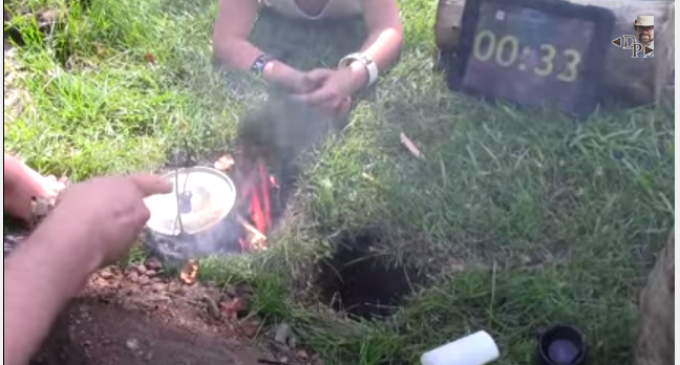
A Dakota fire hole requires much less firewood and burns more efficiently, producing hotter fires with less wood. This makes it a very valuable wilderness survival technique in places where firewood is scarce or requires much effort to obtain.
It also creates a stable platform that is very convenient for cooking.
The fire is concealed within a hole limiting the amount of visible light emitted and smoke is also decreased because the wood is burning hotter and more efficiently.

Also, in some woodlands in dry conditions the fire can spread through dead & dry roots & such.
Coal in the ground is another consideration. Centralia, Pa.
remember this!!
I do this every time I need a fire on a survival hike. Only way to go.
Another cooking hint. Find a large rock hole with no leaks. Fill with water. Heat rocks over a small fire then drop in hole along with whatever you cook. Cover with a flat rock. It will cook things like meat or veggies while you do what ever job you are doing. By lunch your food is cooked, with no mess. After all, a pot is just the same, you just carry it around.
kool
be mindfull of the roots in a hole because fire can burn them and could cause a forest fire .retired asst fire chief..http://www.backcountryattitude.com/campfire-problems.html
Also conceals the light and heat of the fire to an extent from detection.
I don’t see it, Chief Wesley Claxton If the plant is alive, only the nearest roots will be dried out enough to burn but I think it unlikely it would burn hot enough to dry the of itself/ Given that it’s below ground level, I think it’d be less likely to have hot stuff blow onto burnables, as oppose to one above ground.
Do not do this in a peet bog.